Digital Poster
Function 1
ISMRM & ISMRT Annual Meeting & Exhibition • 10-15 May 2025 • Honolulu, Hawai'i

|
Computer Number:
1753. WITHDRAWN |
||
 |
Computer Number: 97
1754. Lower
body negative pressure recapitulates upright posture during
supine exercise cardiac magnetic resonance imaging
B. Hathorn, S. Zamani, R. Webb, C. Grant, L. Pixler, N.
Ashari, J. Wang, V. Zaha, M. Nelson
University of Texas at Arlington, Arlington, United States
Impact: The results herein highlight the importance of
performing exercise cMRI under conditions that simulate
normal upright posture, and move exercise cMRI one step
closer to broad clinical adoption.
|
|
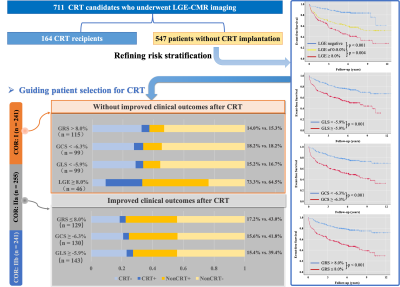 |
Computer Number: 98
1755. Identifying
Patients for Cardiac Resynchronization Therapy Beyond Current
Guidelines: Insights from Cardiac MRI
D. Zhou, M. Lu
Fuwai Hospital, Beijing, China
Impact: These findings suggest that integrating CMR
imaging into clinical practice can significantly improve
candidate selection for CRT, potentially increasing
treatment efficacy.
|
|
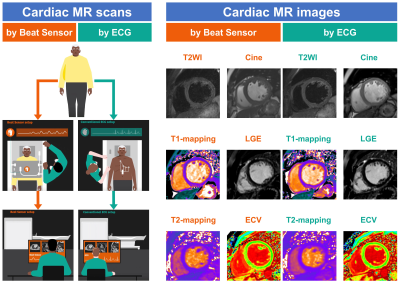 |
Computer Number: 99
1756. Comparing
Beat Sensor-Triggered and ECG-Triggered Cardiac MRI: A
Prospective Clinical Study
X. Qian, Y. Wu, C. Fu, C. Chen, S. Wang, K. Liu, Y. Chen, L.
Chen, H. Jin, M. Zeng
Zhongshan Hospital, Fudan University, Shanghai, China
Impact: This study demonstrates the clinical feasibility
of BS-triggering for cardiac MRI, offering a viable
alternative to ECG triggering, and potentially enhancing the
quality of Cine and LGE images.
|
|
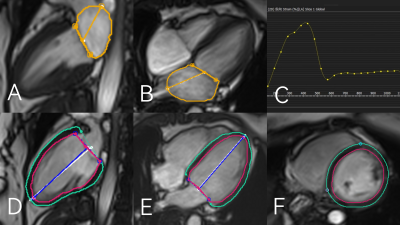 |
Computer Number: 100
1757. Impact
of omega-3 PUFAs on left heart myocardial strain in hypertensive
patients: a CMR tissue tracking technique study
L. Cui, J. Lyu, C. Zhang, X. Qu
the Second Hospital of Dalian Medical University, Dalian, China
Impact: These findings highlight a potential need for
caution in the use of omega-3 PUFAs supplements for primary
cardiovascular disease prevention, considering uncertain
cardiovascular benefits. The results also provide imaging
evidence to support early clinical intervention.
|
|
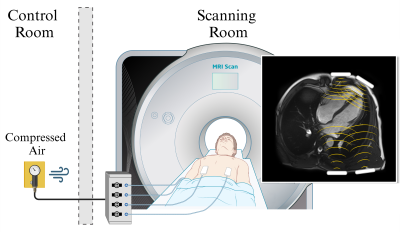 |
Computer Number: 101
1758. Assessing
sex and age effect on ventricular stiffness using cardiac
Multifrequency MR Elastography
J. Castelein, A. Duus, P. Bække, I. Sack, N. Jaitner, A.
Hansen, R. Dierckx, O. de Backer, N. Vejlstrup, M. Lund, T.
Jespersen, R. Borra
University Medical Center Groningen, Groningen, Netherlands
Impact: Cardiac MMRE enables non-invasive quantification
of both LV and RV stiffness. This technique unveils
sex-specific age-related changes in ventricular stiffness,
potentially leading to personalized cardiovascular risk
stratification and treatment strategies. It opens new
avenues for investigating sex-specific cardiac aging
mechanisms.
|
|
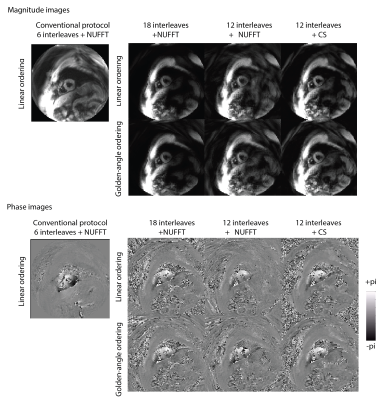 |
Computer Number: 102
1759. Accelerated
2D Cine DENSE MRI using Golden-Angle Spiral Acquisition and
Compressed Sensing Reconstruction
S-F Shih, S. Li, Y. Wu, S. Wang, F. Han, H. Wu, K-L Nguyen,
J. P. Finn, X. Zhong
David Geffen School of Medicine, University of California Los Angeles, Los Angeles, United States
Impact: The proposed work may facilitate efficient DENSE
data acquisition for strain imaging in clinical settings.
|
|
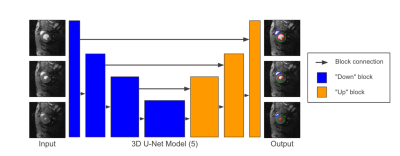 |
Computer Number: 103
1760. Comprehensive
assessment of cardiac structure and function in HFpEF like
models using MRI and machine learning-based quantification
T. Yoganathan, M. Sooknah, B. Martin-McNulty, F. Schmid, F.
Kober, J. Riegler
Calico Sciences, South San Francisco, United States
Impact: This optimized protocol enables sensitive and
efficient detection of subtle cardiac changes, providing a
valuable tool for preclinical research and advancing our
understanding of cardiovascular disease progression,
particularly in the context of HFpEF.
|
|
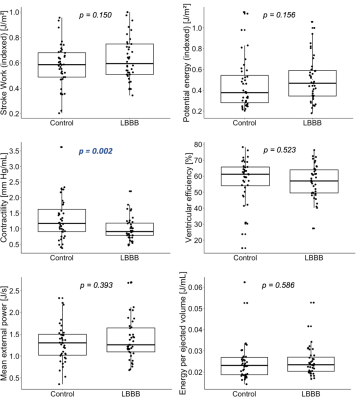 |
Computer Number: 104
1761. Noninvasive
cardiovascular MRI pressure-volume loops reveal impact of left
bundle branch block beyond impaired ejection fraction
L. Öman, P. Arvidsson, F. Seemann, B. Wieslander
Karolinska Institutet, Stockholm, Sweden
Impact: Cardiovascular magnetic resonance-derived
noninvasive PV loops reveal lower contractility in LBBB,
independently of the conventional measure of left
ventricular ejection fraction. Therefore, PV loop derived
contractility could potentially help assess and optimize
treatment of LBBB using cardiac resynchronization therapy.
|
|
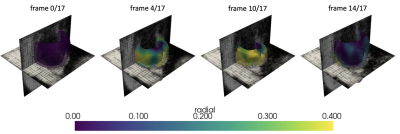 |
Computer Number: 105
1762. Synthetically
trained convolutional neural networks for the analysis of
in-vivo 3D cardiac tagged MRI
S. Buoso, C. Stoeck, S. Kozerke
ETH and University of Zurich, Zurich, Switzerland
Impact:
This work demonstrates that synthetic datasets can be used to train neural networks for the analysis of 3D tagged MRI, reducing the burden of annotating in-vivo data. The trained models and synthetic data will be made available. |
|
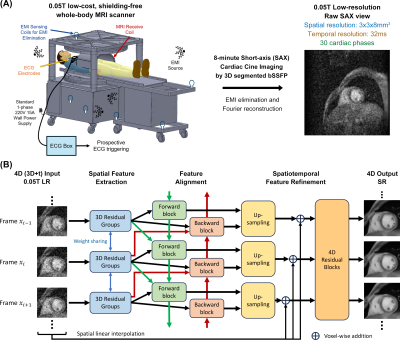 |
Computer Number: 106
1763. Ultra-low-field
Cardiac Cine MRI with Deep Learning
V. Lau, Y. Ding, S. Su, J. Hu, J. Zhang, A. Leong, Y. Zhao,
E. Wu
The University of Hong Kong, Hong Kong SAR, China
Impact: Enhancing image resolution and fidelity for
8-min 0.05T free-breathing 3D cardiac cine imaging using
data-driven 4D deep learning approach potentially
enables assessment of cardiac function and morphology at
0.05 Tesla.
|
|
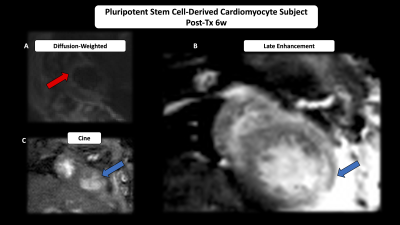 |
Computer Number: 107
1764. Cardiac
MRI Reveals Matured Pluripotent Stem Cell-Derived Cardiomyocyte
Therapy Attenuates Adverse Remodelling in Guinea Pigs
M. Cook, J. Barry, B. Qiang, M. Larsen, B. Ozcan, C. Bailey,
L. Cortes, W. Dhahri, T. Valdman Sadikov, M. Laflamme, G.
Wright
University of Toronto, Toronto, Canada
Impact: This study demonstrates that MRI biomarkers can
assess PSC-CM therapy efficacy in vivo, providing a tool to
refine regenerative treatments. By enabling precise
monitoring of therapeutic integration, this approach may
guide optimization of future regenerative therapies toward
clinical applications.
|
|
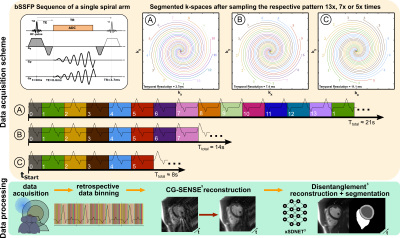 |
Computer Number: 108
1765. Fast
high Spatiotemporal-Resolution Spiral bSSFP Cardiac Cine with
Disentanglement-based Reconstruction and Segmentation
O. Schad, J. Heidenreich, N-C Petri, V. Hartung, B. Baeßler,
B. Petritsch, T. Bley, T. Wech
University Hospital Würzburg, Würzburg, Germany
Impact: With undersampled spiral bSSFP acquisitions and
a disentanglement-based reconstruction method high temporal
resolution cardiac cine imaging can be acquired with up to
3.7$$$\,$$$ms/frame, potentially improving accuracy in left
ventricular strain analysis and cardiac function assessment
in subjects with regular heartbeat.
|
|
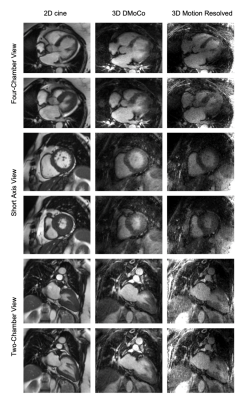 |
Computer Number: 109
1766. 5-D
free-breathing and ungated cardiac MRI using
diffeomorphicmotion-compensated (DMoCo) algorithm
J. Kettelkamp, L. Romanin, S. Priya, M. Jacob
University of Virginia, Charlottesville, United States
Impact: The proposed diffeomorphic motion compensated
recovery scheme is more data and computationally efficient
thancurrent motion resolved reconstruction methods used in
5D cardiac MRI, and can offer good recovery from short 3D
radialungated scans.
|
|
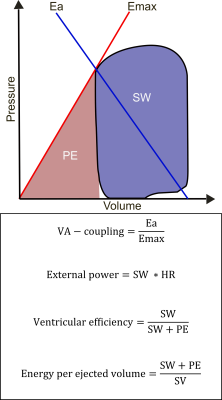 |
Computer Number: 110
1767. Cardiac
contractility and ventricular efficiency are predictive of
adverse cardiac remodeling independent of infarct size in STEMI
patients
T. Lav, T. Engstrøm, K. Kyhl, D. Nordlund, J. Lønborg, H.
Engblom, D. Erlinge, H. Arheden
Lund University, Skåne University Hospital, Lund, Sweden
Impact: Non-invasive PV-loops could be used early after
STEMI in risk assessment for adverse cardiac remodeling.
|
|
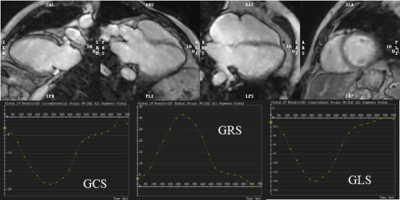 |
Computer Number: 111
1768. Assessment
of left ventricular function and strain in dilated
cardiomyopathy patients using 3D CMR cine imaging: a feasibility
studySynopsis
Q. Pu, X. Zhang, J. Sun
West China Hospital, Sichuan University, Chengdu, China
Impact: The 3D cine ESSOS sequence can serve as a
valuable tool for rapidly evaluating heart structure and
function in patients with DCM, offering a cost-effective
screening approach.
|
The International Society for Magnetic Resonance in Medicine is accredited by the Accreditation Council for Continuing Medical Education to provide continuing medical education for physicians.